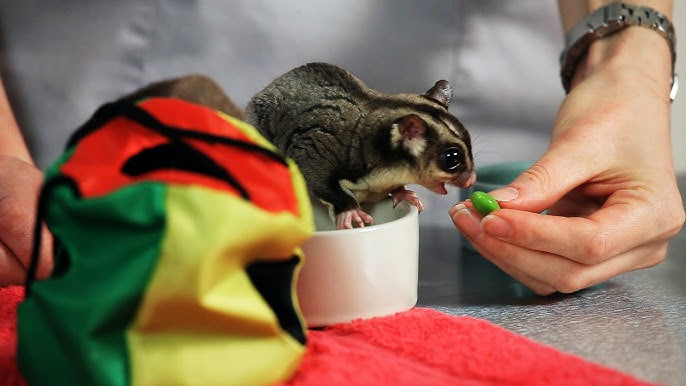
Feeding a sugar glider properly is one of the most important parts of keeping this adorable little marsupial healthy and happy. These tiny nocturnal creatures have a fast metabolism and very specific nutritional needs. Understanding how, when, and what to feed them ensures they thrive and live a long, joyful life.
First, sugar gliders need a balanced diet that mimics what they eat in the wild — a mix of protein, fruits, vegetables, and natural nectar or sap sources. The best approach is to divide their meal into two portions: a main dinner in the evening when they wake up, and a smaller portion or snack early in the morning before they go back to sleep. Since sugar gliders are nocturnal, feeding them at night fits their natural rhythm and encourages normal behavior.
Start with protein, which is essential for muscle growth and energy. You can offer cooked chicken, boiled egg, mealworms, or insects like crickets or silkworm pupae. Make sure these are unseasoned and free from oil or salt. Many owners also provide specialized sugar glider pellets or high-protein supplements designed specifically for their needs.
Next, add fresh fruits and vegetables. Offer small, bite-sized pieces of apple, papaya, melon, grapes, or mango. For vegetables, try carrots, corn, sweet potato, peas, and leafy greens. Rotate different types daily to give them variety and ensure a wide range of nutrients. Avoid citrus fruits and anything overly sugary or starchy — sugar gliders may love sweet treats, but too much sugar can lead to obesity and tooth decay.
A unique part of their diet is nectar or honey-based mixes. In the wild, sugar gliders lick sap and nectar from trees. You can replicate this by offering a homemade nectar blend made from warm water, honey, and a glider-safe vitamin supplement. Commercial nectar formulas are also available and help meet their dietary requirements.
Always provide fresh water in a shallow dish or a drip bottle. Change it daily to keep it clean. Avoid feeding them processed human food, dairy, onions, garlic, or chocolate — these are toxic and dangerous for their health.
Lastly, remember that bonding often happens during feeding time. Offer food from your hand or let your glider climb onto you while eating. This helps strengthen your connection and builds trust. With a thoughtful feeding routine and plenty of love, your sugar glider will stay healthy, curious, and full of life.